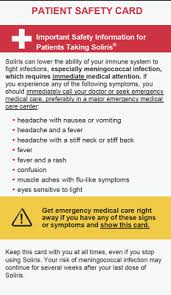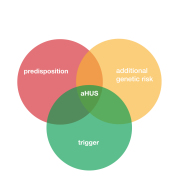Three questions in the RDD22 video are each very specific but reflect the diverse impact of having had aHUS.
Firstly one about Strokes and aHUS. A stroke occurs when blood vessels in the brain become blocked or because of weakness ,bursts. Thereby cutting off blood supply and damaging the brain.
The hallmark of aHUS is impairment of kidneys, but an aHUS TMA can cause impairment of other organs including the brain. But not frequently. Reported eurological symptoms tend to be less severe. Many aHUS patients present with very high blood pressure. Hypertension a risk factor as a cause of strokes.
More strokes are reported by TTP ( thrombotic thrombocytopenic purpura) patients who has a higher incidence of brain impairment than aHUS patients. However in the recently published Global Action article about its study of the aHUS Diagnosis Process, 3 patients reported that they experienced symptoms of seizures.
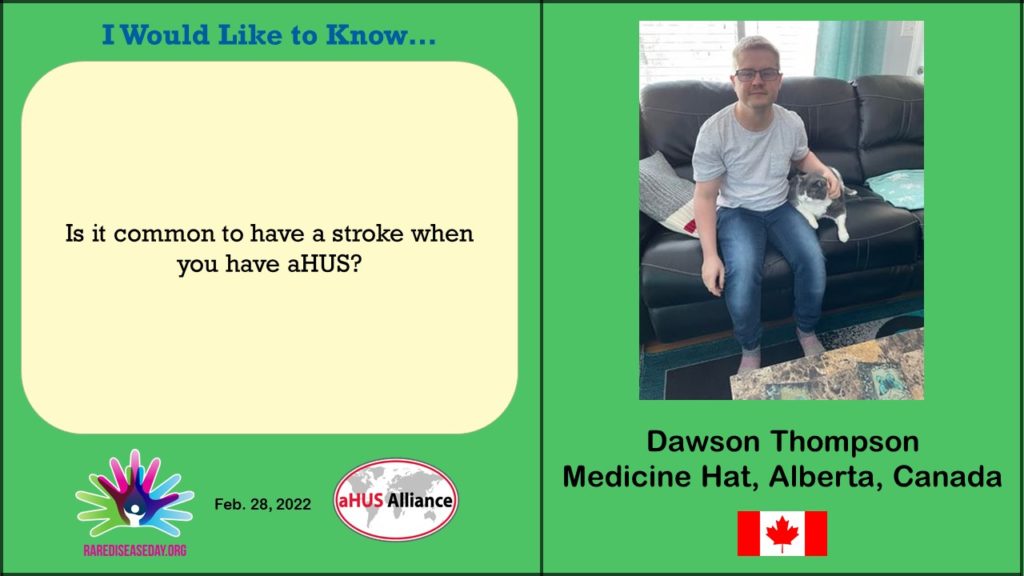
An aHUS stroke is possible either as a direct result of an uncontrolled TMA, or secondary to very high blood pressure in those who are risk of a stroke. But an aHUS stroke is far from common, Dawson.
Next a question about DGKE or diacylglycerol kinase ε . DGKE is something that exists in the lining of blood vessels to protect it from excessive clotting by the coagulation system . Failure to control it lead to damage on the lining and then more clotting from a triggered TMA. But it is not a Complement TMA. It may produce “aHUS like” symptoms but it is is much rarer, there may only be 70 people diagnosed with DGKE each year, and Globally , only about 1500 people living with it.
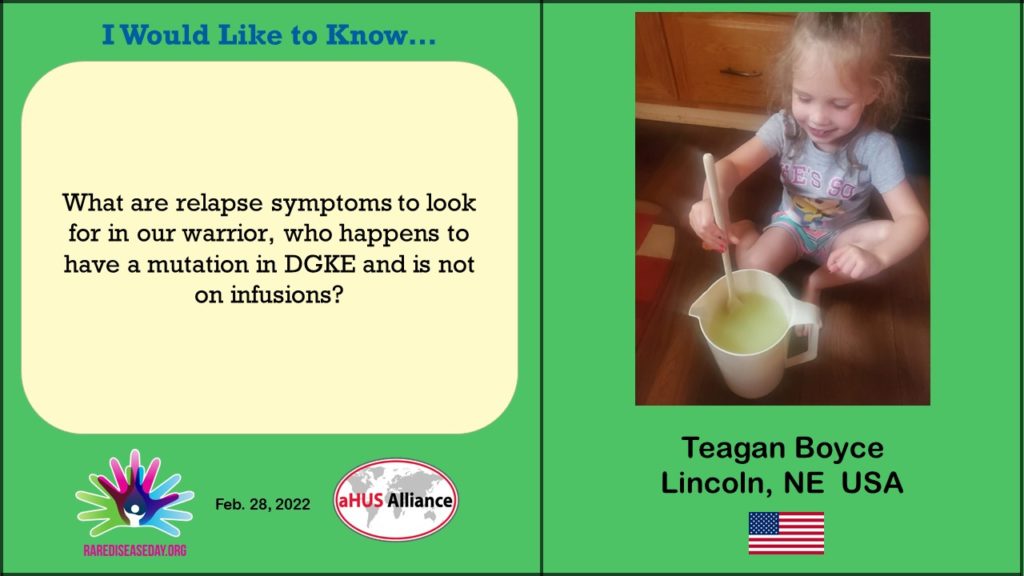
It is not treatable by eculizumab. It happens in childhood and may disappear as patients get older often with no further on sets after 20 years of age. It seems to be associated with childhood development issues. It can also be seen as another disease, Nephrotic Syndrome. NS has an incidence of hundreds of thousands of patients each year, it makes DGKE barely visible in a NS diagnosis. Better chances rest with being thought of as aHUS. There are a mix of presenting symptoms reported by aHUS patients, Teagan and only one may be experienced by more than half of them , feeling or being sick, and all are common to many illnesses. Watch for unexplained nausea , tiredness , paleness and changes in need to go to the toilet.
Thirdly a question about sports and recreation and aHUS. Once stable after successful treatment, aHUS patients can lead an active life. Most will attend school or work . It is good that they do . Able to be active impacts on quality of life and that in turn makes aHUS people more active in a virtuous spiral upwards to normal well-being. Recreation and sport can also be a big part of that.
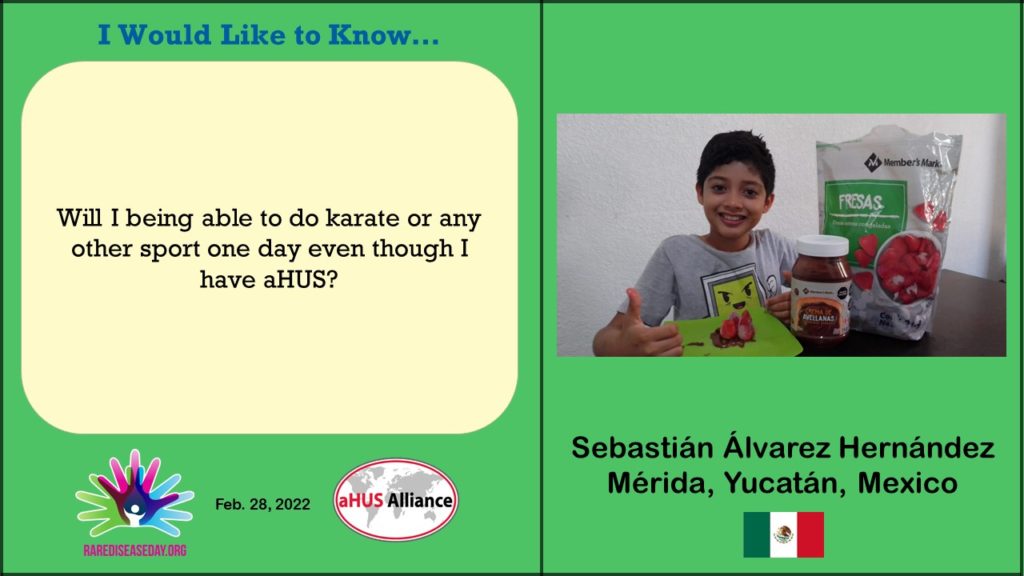
Sebastian, your question is very relevant to the aHUS patient Research agenda , which currently only focuses on studying and work issues after recovery. Recreation should be included. It would help patients to know that sports can be played and what levels are possible. Of course it up to each individual to appreciate what can or cannot done , whether with or without aHUS, but normally it depends on personal aptitude and a commitment to practice.
Article No. 502

